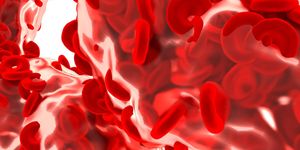How Dangerous are Cell Phone Towers?
Ever wondered if the cell towers that help us make important phone calls are damaging to our health? The emerging growth of cell towers is paralleling the growing need of cell phone usage and such phenomena has led technologists to re-think if this can do harm than good. The latest study, published in Environmental research, has presented findings around precautionary approaches to siting cell towers.
Learn more about cell towers:
"The research on the health impacts of RFR is still inconclusive. But some of the preliminary data gives us reason to be concerned," said Joshua Pearce, a professor in electrical and materials engineering from Michigan Technological University who led the study, which reviews current data on RFR and engineering solutions for placing towers. "I'm pro-tech and I'm pro-human, so I think there are ways for us to have our cell phones and minimize potential risk without waiting to find out that putting a cell tower on top of a school was a bad idea."
Cellphone usage means exposure to low levels of radio-frequency radiation (RFR) which is not exactly dangerous--however, being around cell towers is another story. Specifically, research has noted that a handful of human studies exhibit neurobehavioral symptoms when around these towers as well as increased risk for cancer.
"It's in companies' best interests to be thoughtful about where to place cell towers; they don't want to move towers or be held responsible down the line. These effects are inadvertent -- but there are options to do it differently that can reduce potential health impacts and thus a company's future bottom line,” says Pierce.
Researchers are strongly encouraging companies to think before they build a tower—particularly among vulnerable populations where safety is placed at risk. When cell towers are needed, it is supposed to be placed at a safe distance at least a third of a mile, away from institutions of people such as schools, hospitals and neighborhoods.
Source: Science Daily









